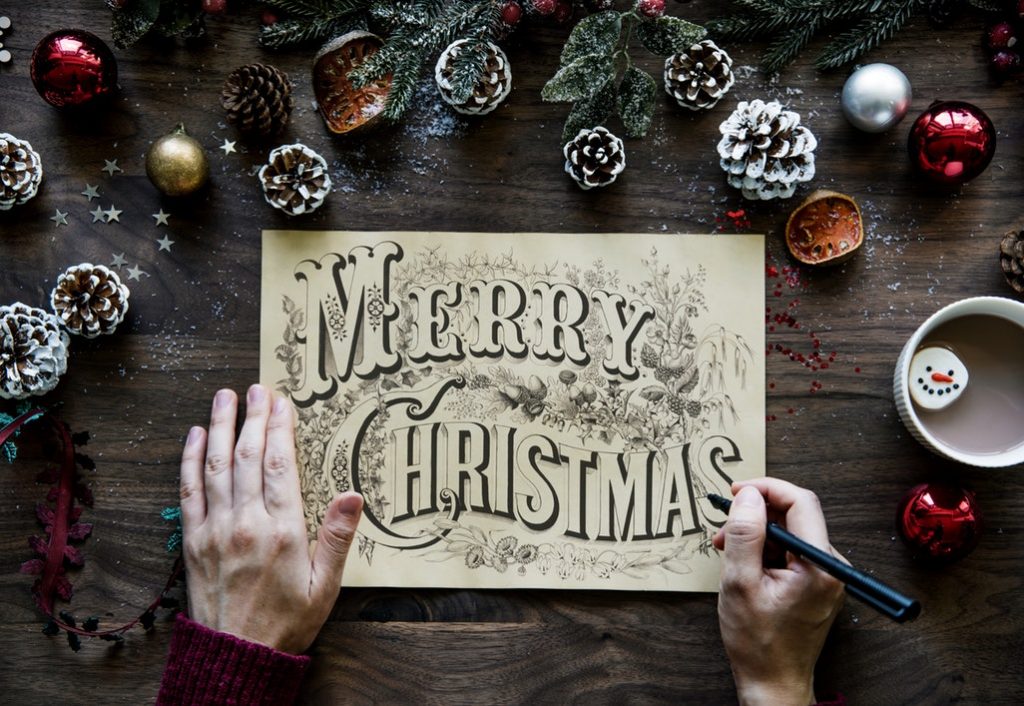Christmas Traditions Around the World – Part 3

It’s Christmas time! That means it’s time to put up decorations and light some candles. While the roots and cause of the celebration – honouring the birth of Jesus Christ – are the same, Christmas traditions vary considerably from country to country. The most common are Anglo-American customs including Santa Claus (or Father Christmas), candy canes, Christmas cards, mistletoe and holly. Read on to find out how Christmas is celebrated in France and Denmark!
FRANCE: JOYEUX NOËL!
In France, the most important Christmas decoration is the Crèche de Noël (Nativity Scene), depicting the birth of Jesus in a stable or cave. Apart from the Holy Family, shepherds, animals and the Three Wise Men, further figurines (so-called santons or “little saints”, usually made of clay) may be added, such as a miller, baker, priest and fisherman. The santons are produced in the Provence region.
Other typical decorations are Christmas trees and mistletoe – hung above the door to bring good fortune throughout the coming year. Many towns and cities have a Christmas market (Marché de Noël), providing a festive atmosphere and great shopping opportunities.
On Christmas Eve, a long, luxurious family dinner is held, which may last up to six hours. Since it requires staying awake until midnight and beyond, it is called “Réveillon“ (from the French word réveil: waking). Appetizers may include lobsters, oysters, escargots and foie fras; the main course is often roast turkey with chestnuts, goose or venison and various cheeses. A typical dessert is the bûche de Noël, a sponge cake decorated like a yule log, traditionally made of chocolate and chestnuts (find the recipe here). The yule log is part of an old folk tradition: It was burnt in the hearth of the house as a symbol of prosperity and luck for the year ahead.
In Provence, the tradition of the 13 desserts is very popular. Among them are pompe à l’huile (a flavoured bread), dates, nuts, pastries etc. Of course, a selection of good wines, champagne or other sparkling wines is also part of the Réveillon celebration.
Catholic families attend midnight mass (messe de Minuit) on Christmas Eve. Christmas carols may also be sung.
While in the past, children used to get presents on December 6 from Saint Nicolas, now it is Père Noël, Father Christmas, who brings them. He wears a long red robe and a pointed hat and carries the presents in a basket on his back.
Children put their shoes by the fireplace or under the Christmas tree so Père Noël can fill them with gifts. While younger children open their presents on Christmas morning, older children usually open them at midnight. Among adults it is common to wait until New Year’s Eve to give each other presents.
Christmas Day lunch is equally splendid and often spent with more family such as the in-laws.
DENMARK – GLÆDELIG JUL!
In Denmark, a special Advent candle (Kalenderlys), marked with the days of December up to Christmas Eve, helps to count down the days until Christmas. It is usually burnt at the family evening meal each day. Both advent wreaths and advent calendars (containing 24 small gifts) are common.
There is also a television Julekalendere, a special Christmas-themed, advent calendar-type television programme with 24 episodes. Every day in December until Christmas Eve, one episode is shown. These advent calendars have become extremely popular and are often reprised in subsequent years.
On December 13, following the Swedish custom, there are Lucia celebrations in churches, schools and kindergartens. Read more about this tradition here.
In preparation of Christmas, families bake Christmas cookies and pastries such as Klejner (find the recipe here) and Pepperkager (gingerbread – find the recipe here), decorate their living rooms and visit Christmas markets.
Danes celebrate on December 24, which is referred to as Juleaften (literally “Yule evening”). Many people attend an early Christmas mass before Christmas dinner, coming together to sing traditional carols.
In the afternoon, many families watch the Christmas programmes on television. Parents secretly decorate the Christmas tree with candles, Julehjerter (pleated Christmas hearts), Kræmmerhuse (conical paper bags), festoons of national flags and a star on the top, and children are not allowed to see it until dinner on Christmas Eve. The tree is then lit up and families gather round to sing Christmas carols and join hands to dance around the tree.
The evening meal consists of roast pork, duck or goose (stuffed with apples and prunes), potatoes, red cabbage, beets and cranberry jam. For dessert Danes have risalamande (find recipe here), a rice pudding made with almonds and served with a hot cherry sauce. A peeled almond is hidden in the dessert bowl – whoever finds it is said to have good luck in the coming year. The lucky finder also gets a present, the “Mandelgave“.
Traditional Danish Christmas drinks include gløgg (a mulled wine), Nisseøl (a sweet dark beer) and Julebryg (a stronger brown ale).
After the dancing and carol-singing, it is time for the unwrapping of gifts. In many families, the Julemanden (Santa Claus) himself may appear to distribute the presents, arriving in a sleigh drawn by reindeer. Julenisser (Christmas elves) assist him with his Yuletide chores. They are traditionally believed to live in attics or barns. Children leave out milk or rice pudding for them to maintain the favour of the nisser, and are delighted to find the food gone on Christmas morning.
On Christmas Day and the second day of Christmas, Danes traditionally gather with family to have Christmas lunch, Julefrokost, consisting of a large buffet of hot and cold dishes (fish, meat, regional specialties and rice pudding), beer and akvavit (a flavoured Scandinavian spirit).
How do you celebrate Christmas? Let us know in the comments!
Also read Part 1 and Part 2 of the Christmas Traditions Around the World.







